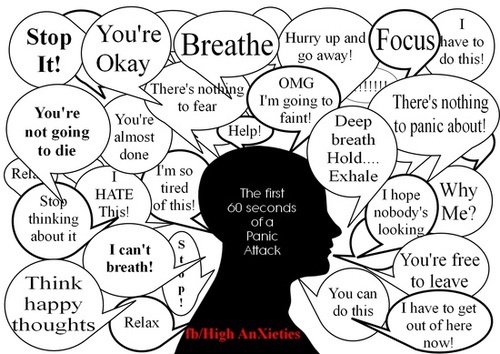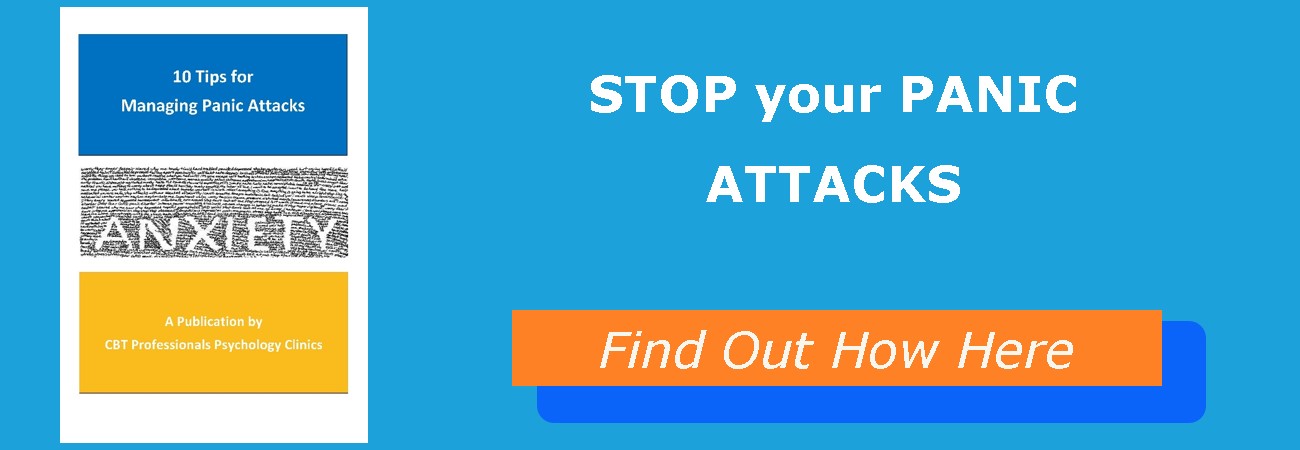- Gold Coast Psychologists & Online Psychologists
- Coomera (07) 5551 0251
- Nerang (07) 5668 3490
- admin@cbtprofessionals.com.au
How Long Do Panic Attacks Last
How long do panic attacks last?
“It feels like I’m going to die. My heart is jumping out of my chest and I can’t breathe properly. I feel shakey and sick. I don’t know what’s happening to me. It’s the most terrifying thing. I don’t know if or when it’s going to stop!”

This is a fairly typical experience of an anxiety attack. This distressing series of physical symptoms can suddenly come over you and stop you in your tracks. In fact, up to 40% of Australians will experience one of these encounters with panic in their lifetime. That’s a lot a people!
What are panic attacks?
This extreme physical reaction, otherwise known as the Fight or Flight (FOF) effect is a powerful automatic response, which believe it or not, is actually supposed to be helpful. Life-saving in fact. It can enable us to escape possible danger. Sure this burst of adrenalin would be welcomed if I was on a safari being chased by an enraged 3000 kg African elephant….but I must say when I’m sitting in my air-conditioned office sipping a cappuccino and it strikes, it’s not helping me at all.
How long do panic attacks last you wonder?
It is somewhat reassuring to know that this adrenalin charged reaction can come and go quickly. Within 5 to 10 minutes in most cases. I know, if only you knew that the first time it happened!
It’s often the unpredictability of anxiety attacks though that can cause the greatest suffering. Once you’ve experienced these attacks you start to dread another one. That’s right, even the slightest bit of anxiety or unease, which you might have previously overlooked, becomes a trigger for worry. Then, worrying about anxiety coming back to haunt you leads to more anxiety. It’s a vicious cycle. One anxiety attack can feel like it lasts for a lot longer, even hours or days. Although the full-blown anxiety attack may not last more than 30 minutes at a time, the aftermath of this anticipatory anxiety can feel just as bad. When you dread something, you can start to look for it, so any signs of anxiety are more noticeable. And the vicious anxiety cycle continues.
What makes panic attacks stop?
The good news is that anxiety attacks will pass. Sure if we get away from that charging elephant we know we’ll feel a lot better. Well, the truth is that when the threat goes so does the anxiety. Often though, we aren’t dealing with African elephants instead the threats we fear are less obvious. They’re more hidden. We’re threatened by fears about work, family, future, relationships, money, performance and the list goes on. These threats though can seem just as dangerous to us and lead to just as much fear.
Learning how to re-evaluate these type of threats can help you switch off the FOF response. It can also be helpful learning how to experience physical reactions of anxiety with confidence rather than fear. Practicing calmness and acceptance through relaxation and breathing practices has been found to work well too.
For more amazing tips on how to manage panic attacks, you can download your free guide here. In it you will find lots of reallly practical informatin on coping skills and when and where to seek further help if you need it.


